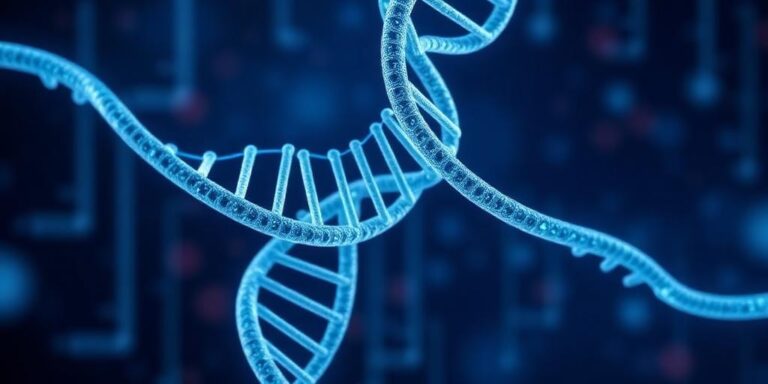The Intersection of Biotechnology and Cybersecurity (Bio-Hacking 2029)
In an increasingly interconnected world, the boundaries between technology and biology are blurring. Biotechnology, with its advancements in genetic engineering, personalized medicine, and bio-integrated devices, holds immense promise for improving human health and well-being. However, this progress also introduces novel cybersecurity risks that must be addressed proactively. This article delves into the intersection of biotechnology and cybersecurity, exploring the potential threats and outlining strategies to secure our bio-future.
The Convergence of Biotech and Cybersecurity
The convergence of biotechnology and cybersecurity stems from the increasing reliance on digital systems in biological research, healthcare, and biomanufacturing. Consider these aspects:
- Electronic Health Records (EHRs): EHRs contain sensitive patient data, including genetic information, medical history, and treatment plans. Breaches of EHRs can lead to identity theft, discrimination, and compromised medical care.
- Genome Sequencing and Editing: Advances in CRISPR and other gene-editing technologies allow for precise manipulation of DNA. However, these tools can be misused to create bioweapons or genetically modified organisms with harmful characteristics.
- Medical Devices: Implantable medical devices, such as pacemakers and insulin pumps, are vulnerable to hacking. Attackers could potentially alter device settings, deliver harmful shocks, or even shut down critical functions.
- Biomanufacturing: Biomanufacturing facilities rely on automated systems and data analytics to produce pharmaceuticals, biofuels, and other bio-based products. Cyberattacks on these facilities could disrupt supply chains, compromise product quality, and even lead to the release of dangerous pathogens.
Potential Cybersecurity Threats in Biotechnology
The cybersecurity threats in biotechnology are diverse and evolving. Some of the most pressing concerns include:
- Data Breaches: Unauthorized access to biological data, including genomic information, protein structures, and clinical trial results, can have significant consequences. This data can be used for malicious purposes, such as creating targeted bioweapons or developing counterfeit drugs.
- Malware Infections: Malware can disrupt laboratory operations, compromise research data, and even hijack medical devices. Ransomware attacks, in particular, can cripple healthcare organizations and biomanufacturing facilities, leading to significant financial losses and patient harm.
- Supply Chain Attacks: Cyberattacks on suppliers of reagents, equipment, and software used in biotechnology can have cascading effects. Compromised products can introduce vulnerabilities into research labs and biomanufacturing facilities, leading to data breaches or operational disruptions.
- Insider Threats: Disgruntled employees or malicious insiders can intentionally sabotage research, steal data, or introduce malware into systems. Insider threats are particularly difficult to detect and prevent.
- Bio-Hacking: Bio-hacking refers to the practice of manipulating biological systems for malicious purposes. Cyberattacks on gene editing tools, synthetic biology platforms, and other biotechnologies could enable the creation of novel bioweapons or the modification of existing pathogens to make them more dangerous.
Strategies for Securing the Bio-Future
To mitigate the cybersecurity risks in biotechnology, a multi-faceted approach is needed, encompassing technical, organizational, and policy measures.
- Robust Cybersecurity Infrastructure: Implement strong authentication and authorization controls, encrypt sensitive data, and regularly patch software vulnerabilities. Use network segmentation to isolate critical systems and limit the impact of potential breaches.
- Threat Detection and Response: Deploy intrusion detection systems, security information and event management (SIEM) tools, and threat intelligence feeds to identify and respond to cyberattacks in real-time. Establish incident response plans to guide actions in the event of a security breach.
- Data Governance and Privacy: Implement data governance policies to ensure the integrity, confidentiality, and availability of biological data. Comply with data privacy regulations, such as HIPAA and GDPR, and obtain informed consent from patients before collecting or using their data.
- Supply Chain Security: Assess the cybersecurity posture of suppliers and implement measures to mitigate supply chain risks. Require suppliers to adhere to security standards and conduct regular audits to verify compliance.
- Security Awareness Training: Train employees on cybersecurity best practices and the latest threats. Conduct phishing simulations to test employee awareness and identify areas for improvement.
- Collaboration and Information Sharing: Foster collaboration between cybersecurity experts, biotechnologists, and policymakers to share threat intelligence, develop security standards, and coordinate incident response efforts. Participate in industry consortia and information sharing platforms.
The Road Ahead
The intersection of biotechnology and cybersecurity presents both opportunities and challenges. By understanding the potential threats and implementing proactive security measures, we can harness the power of biotechnology to improve human health and well-being while safeguarding against cyberattacks. As biotechnology continues to advance, ongoing vigilance and adaptation will be crucial to securing our bio-future.



